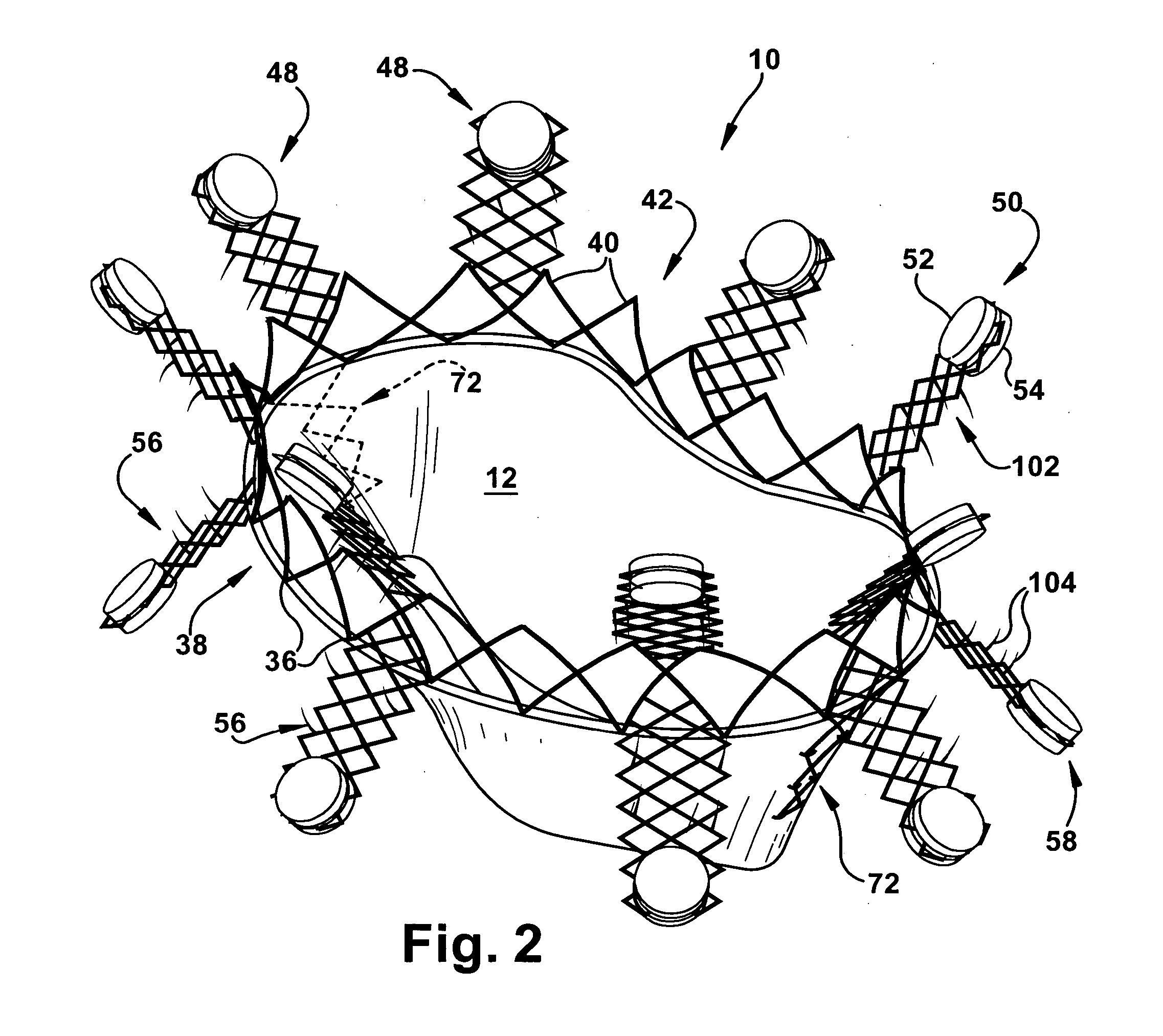Apparatus and method for replacing a cardiac valve
a technology apparatus, which is applied in the field of apparatus and methods for replacing cardiac valves, can solve the problems of heart pumping not only the regular volume of blood, valves are damaged, and the heart has to work harder so as to prevent the prolapse of valve leaflets
- Summary
- Abstract
- Description
- Claims
- Application Information
AI Technical Summary
Benefits of technology
Problems solved by technology
Method used
Image
Examples
Embodiment Construction
[0034] The present invention relates to an apparatus and method for replacing a cardiac valve, and is particularly directed to an apparatus and method for the correction of mitral valve and tricuspid valve disorders via a minimally invasive, percutaneous approach. As representative of the present invention, FIGS. 1 and 2 illustrate an apparatus 10 that includes a prosthetic valve 12 for replacing a dysfunctional cardiac valve, such as a mitral valve 14, by inserting the apparatus over the native mitral valve so that the prosthetic valve assumes the valvular function. It should be understood, however, that the apparatus 10 disclosed herein could also be used to replace other cardiac valves, such as a tricuspid, pulmonary, or aortic valve.
[0035] As shown in FIG. 1, the mitral valve 14 is located between the left atrium 16 and the left ventricle 18, and functions to prevent backflow of blood from the left ventricle into the left atrium during contraction. The mitral valve 14 has a D-s...
PUM
 Login to View More
Login to View More Abstract
Description
Claims
Application Information
 Login to View More
Login to View More - R&D
- Intellectual Property
- Life Sciences
- Materials
- Tech Scout
- Unparalleled Data Quality
- Higher Quality Content
- 60% Fewer Hallucinations
Browse by: Latest US Patents, China's latest patents, Technical Efficacy Thesaurus, Application Domain, Technology Topic, Popular Technical Reports.
© 2025 PatSnap. All rights reserved.Legal|Privacy policy|Modern Slavery Act Transparency Statement|Sitemap|About US| Contact US: help@patsnap.com



